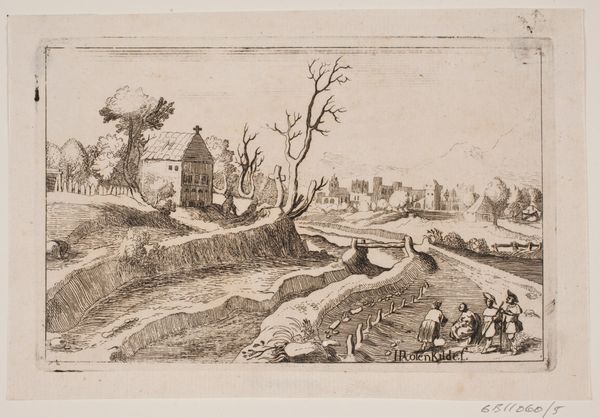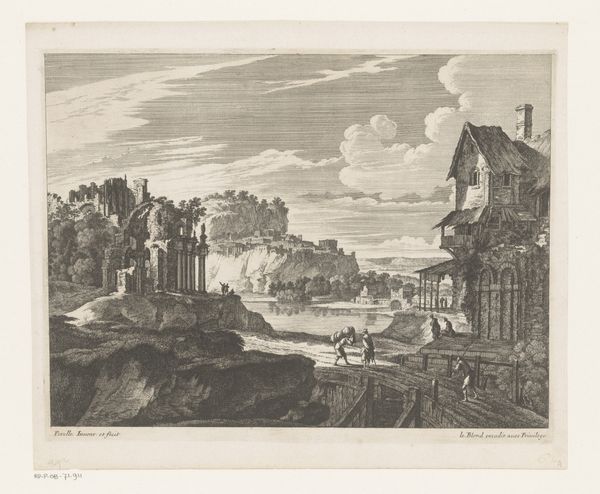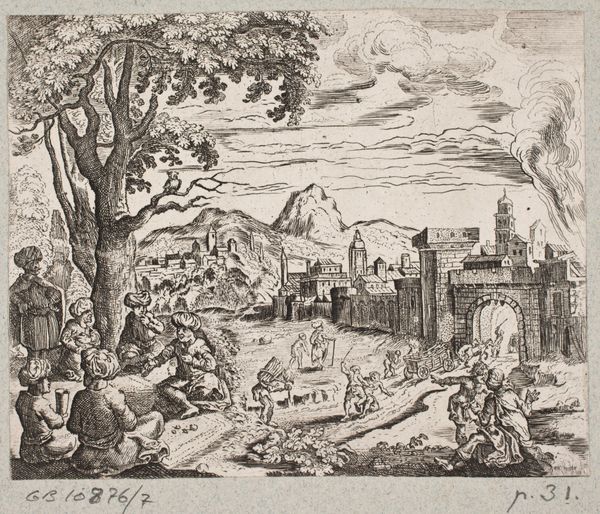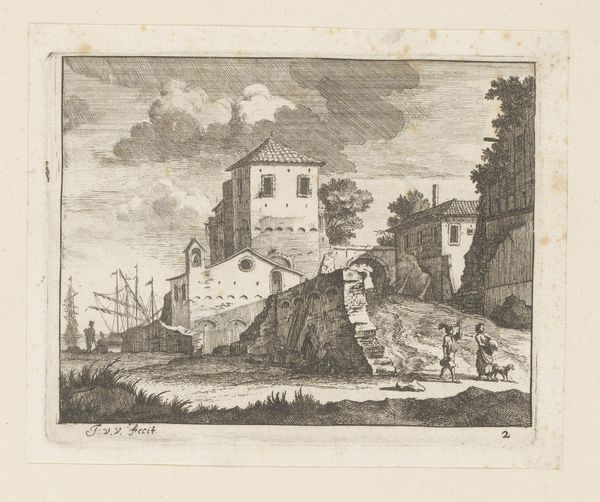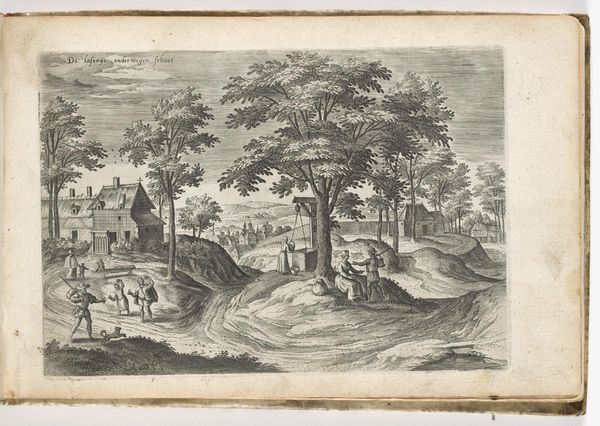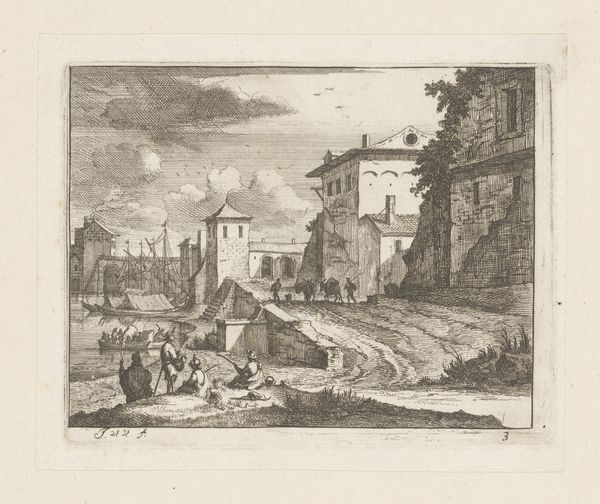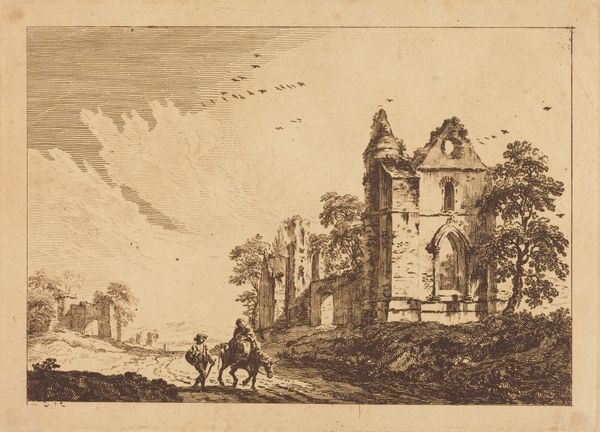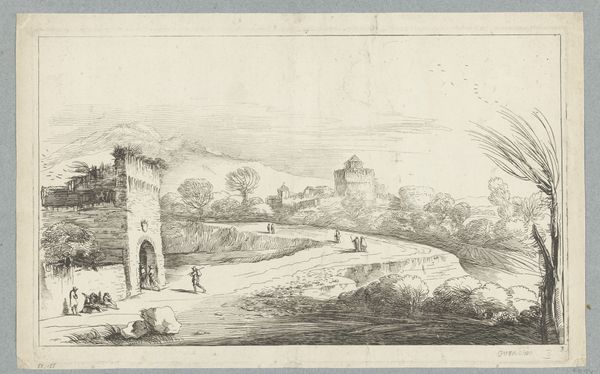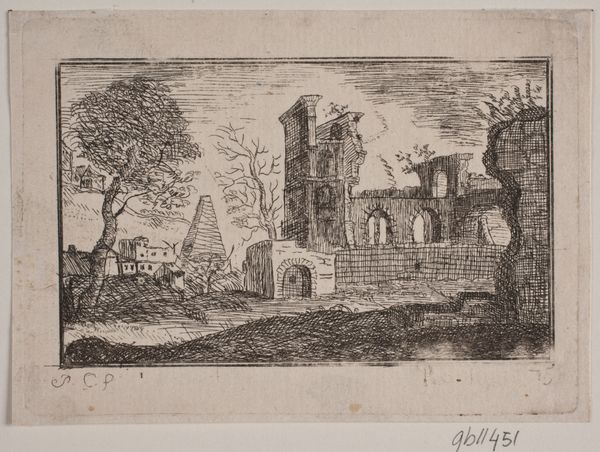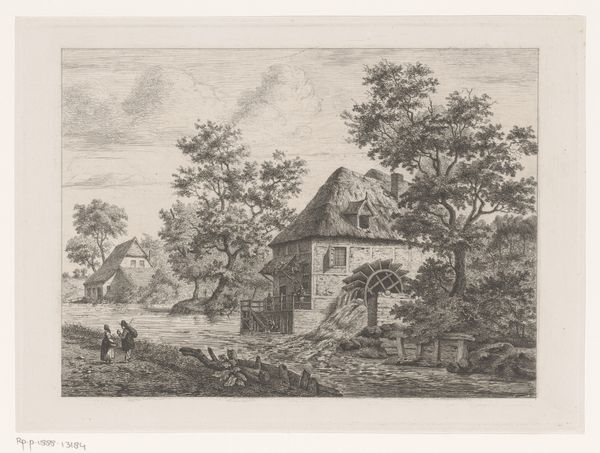
print, engraving
# print
#
landscape
#
history-painting
#
engraving
Dimensions: 99 mm (height) x 155 mm (width) (plademaal)
Curator: Let's take a look at this engraving by H. Rosenkilde from 1746, entitled "Flodlandskab med slot på en banke", or "Flood Landscape with Castle on a Bank." Editor: It feels oddly melancholic, doesn't it? Despite the details, the castle, figures, and hunting scene appear almost spectral, as if conjured from memory. Curator: As a print, specifically an engraving, this image necessitated a transfer of artistic labor. The act of carving the image onto a plate—likely copper—allowed for reproduction and dissemination to a wider audience than, say, a unique painting could reach. We should remember that access and ownership were factors of class. Editor: I agree. The castle dominates, representing power, and it does seem intentionally remote and self-contained. The bridge and waterway might also signify control and division. What about the figures in the lower right? Curator: Yes, two figures rather elegantly dressed—perhaps they represent those who could conceivably pass between worlds in society, from landed aristocracy to nouveau riche merchant princes. A loaded gun. Labor as ownership over nature... the composition draws interesting comparisons. Editor: I'm struck by the potential tension. It looks staged, or as if figures are frozen in anticipation. I wonder if it holds a specific symbolic meaning rooted in Danish cultural history. The castle as a representation of past glories and power struggling against forces of new wealth and social structures. Curator: Or is it Rosenkilde reflecting on changes he witnesses within his own socio-economic circles. To have this landscape, this lifestyle available as print suggests some degree of self-awareness within the artist. An artist dependant upon patronage but perhaps slightly apart. The materials—the print itself—acted as a kind of social currency. Editor: Perhaps. Seeing the layers now and their implied relationships, this print may operate more as a coded warning. Curator: And seeing the level of detailed labor, perhaps Rosenkilde felt the process to be of primary significance. He may have simply been an artisan and nothing more. It’s tough to say for sure what was important, but now we’re primed to consider. Editor: It is definitely worthwhile noting its position as a captured fragment in time and its connection to a much broader cultural landscape of shared visual symbols. Thanks to those implications, it keeps you engaged.
Comments
No comments
Be the first to comment and join the conversation on the ultimate creative platform.

